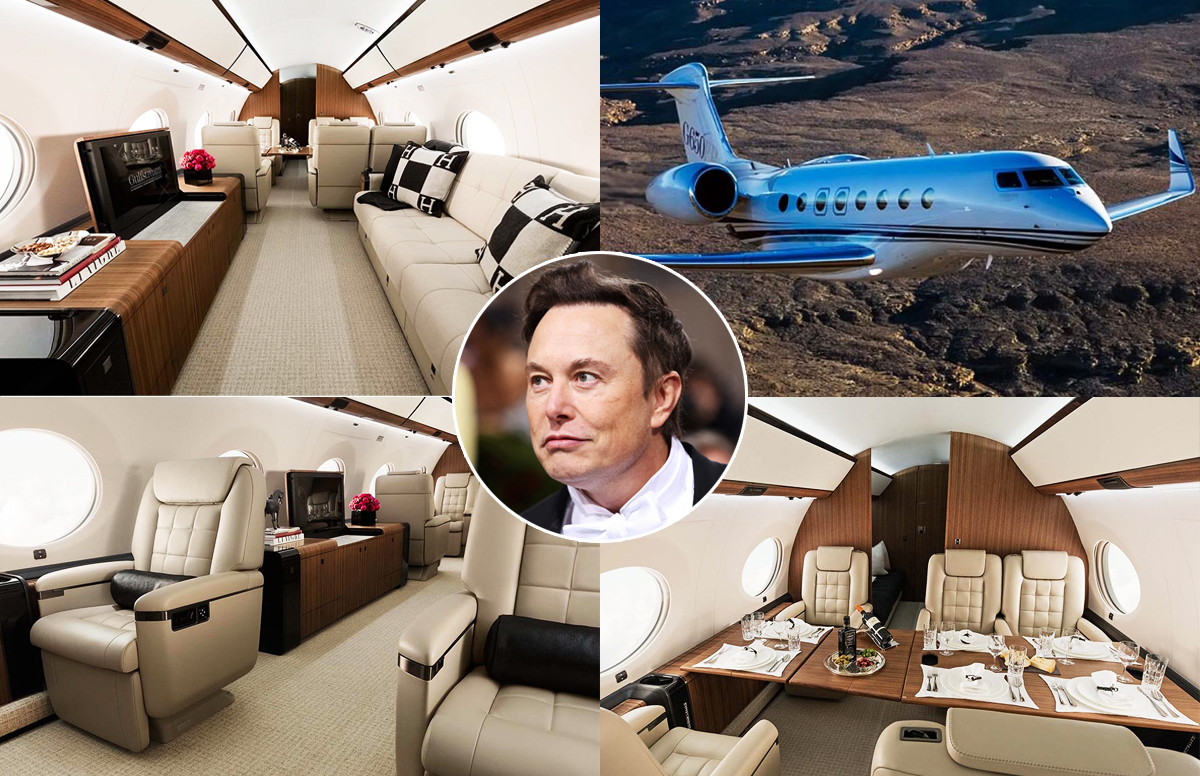Elon Musk’s globe-spanning travels are the stuff of legend. From executive meetings to test launches and major events, the world’s richest man rarely touches commercial flights. But he also travels under a cloak—sometimes literal—to maintain privacy, security, and efficiency. The revelations in recent reports offer a rare peek into Musk’s secretive travel methods.
A Multimillion‑Dollar Jet Fleet
At the heart of Musk’s travel strategy is his private aircraft collection. His primary jet is a Gulfstream G650ER, acquired in 2016 for about $70 million He later upgraded to a Gulfstream G700, valued near $78 million, one of the most advanced civilian jets built by Gulfstream . His full fleet includes multiple Gulfstreams and an older Dassault Falcon 900B, all operable under space X‑affiliated ownership structures for corporate travel.
This fleet allows Musk to circumvent typical airport procedures, baggage claims, and customs delays—delivering extreme convenience and total flexibility.
Privacy by Expectation: Flight Tracking vs. Cloaking
Until recently, open flight tracking sites like JetSpy and the infamous ElonJet Twitter account made Musk’s travels public in real time. That ended in late 2022, after Musk prompted Twitter to ban the tracker, citing personal safety risks after a stalker incident involving his son
By mid‑2024, Musk resumed usage of the FAA’s PIA privacy program, enabling temporary, scrambled aircraft IDs and effectively cloaking his jets’ real-time locations. The FAA now allows private jet owners to hide their flight data entirely, a change widely seen as benefiting Musk and similarly high-profile individuals.
Inside the Cabin: Strict Rules, Subtle Efficiency
A leaked internal NetJets memo provided rare insight into Musk’s in-flight preferences. Outlined in documents stolen during a cyberattack, the guidelines describe Musk as a “laid-back” yet demanding traveler:
Cabin set to a cool 65 °F (18°C)
Dimmable lights to enable napping, even on short hops
No passenger air vents—he dislikes extra noise
No unsolicited small talk: crew should speak only if greeted
Unbreached high-speed Wi-Fi, but avoid assisting with tech unless asked
Want routes that are as fast and direct as possible, regardless of fuel usage
These rules reflect his reputation: intensely focused, self-sufficient, and uninterested in luxury for luxury’s sake—only comfort, speed, and privacy.
Flying on His Terms: Patterns of Travel
In 2023 alone Musk’s jets flew an estimated 1,161 hours—the equivalent of nearly 48 full days in the air. In 2024, data shows nearly 355 flights, with many shuttling between Austin, Texas and California—reflecting shifts in his company bases and political activity.
He’s often en route during US politics-related trips, SpaceX launches, or Tesla executive meetings—rarely deviating and always untraceable if he chooses.
Security Protocols: Behind the Jet Doors
Non-stop, wired Wi-Fi allows Musk to maintain constant connectivity—even while airborne. He’s streamed games, discussed AI projects, and tested airborne connectivity using Starlink aboard the plane. That level of digital interaction while flying underscores why he dislikes disruptions like Wi-Fi outages.
Musk also travels with a team of nearly 20 bodyguards and a personal medical professional—mirroring diplomatic security arrangements for heads of state.
Why He Keeps it Secret
Musk’s travel secrecy is driven by three key motivations:
Personal Safety
As highlighted by the stalking incident involving his son, publicizing jet movements can endanger family members. Musk views location-tracking accounts as doxxing.
Operational Security
Musk’s companies work on government contracts, technology prototypes, and volatile financial announcements. Predictable or exposed schedules could compromise strategy or leak sensitive discussions.
Logistical Efficiency
Port access, customs queueing, and commercial travel create inefficiencies. Musk uses private jets to move faster, smarter, and with absolute control over timing and privacy.

The Downside: Pollution & Criticism
Despite leading an electric vehicle revolution, Musk’s frequent jet travel continues to draw criticism. His jets remain fossil-fueled, and flights spanning continents carry a heavy carbon footprint. Critics point out the irony: Musk advocates for sustainability, yet racks up hundreds of thousands of miles per year aboard private jets.
What’s Next: Regulation or Reinvention?
The FAA’s evolving privacy policy and Musk’s name-driven clout suggest a trend toward higher-profile individuals having protected travel. But this raises questions: Will public policy lag personal preference? And what does it mean for transparency when citizens can no longer track private aircraft?
For Musk, travel will likely remain strictly controlled, discreet, and entirely governed by his preferences.
Conclusion: Travel on His Terms
Elon Musk wouldn’t travel like this unless it served efficiency, privacy, and purpose. From multi-million-dollar Gulfstreams to clandestine flight identifiers and internal no-chat cabin protocols, every aspect of his air travel is deliberate.
He doesn’t post scenic selfies midflight. He doesn’t chat with staff. He doesn’t care about fuel economy or publicity. He just flies—fast, private, uninterrupted.
And in a world where transparency and celebrity are often assumed, Elon Musk continues to prove he prefers traveling in the shadows—on his own terms.